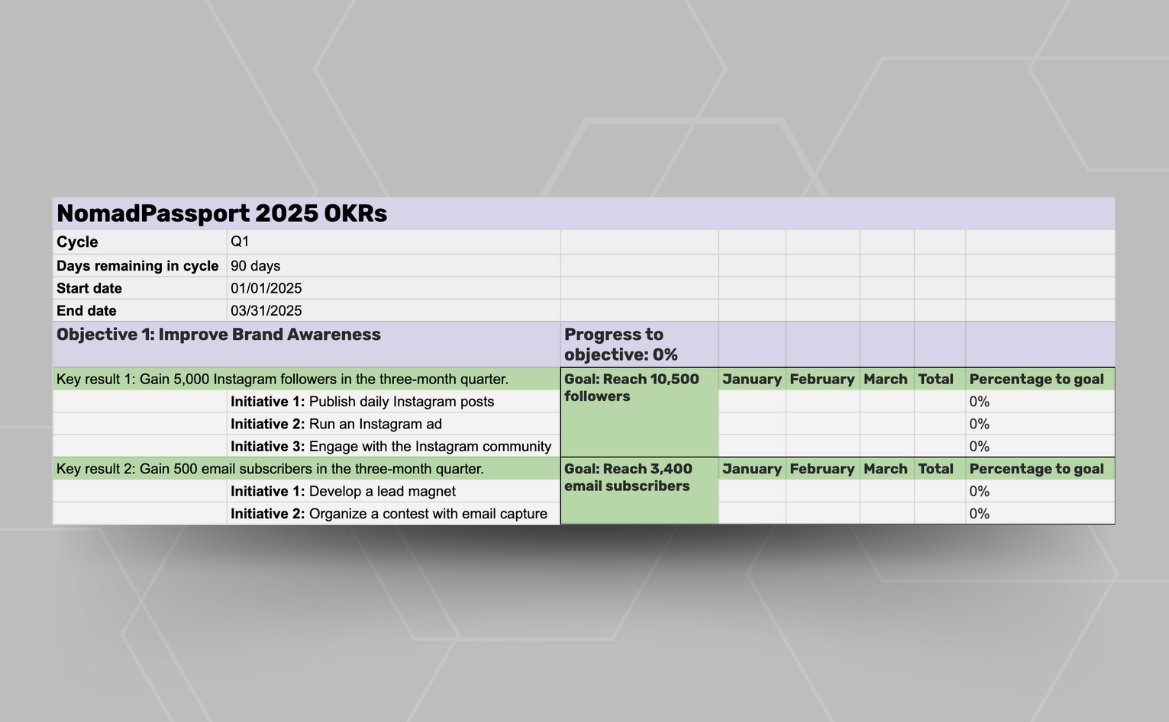The fourth step is to set timeframes for your key results. This step is crucial to track the efficiency of each initiative and progress toward your key results. The set timeframe also creates a sense of urgency and offers a pre-determined time to evaluate efforts.
Remember to allocate enough time to see the full potential of your initiatives. However, a timeline that’s too long can cause results to lag. Finding the ‘sweet spot’ provides the right amount of time to analyze initiative performance and adapt if something isn’t working.
Example:
Like many other companies that utilize objectives and key results, the NomadPassport team decided on a three-month timeframe for their OKRs. At the beginning of each quarter, they will review their OKR results and establish new objectives, key results, or initiatives if necessary.
5. Monitor & Reflect
The fifth step is monitoring your OKR results for further improvement, crucial for effective prioritization of team efforts. Regularly track progress throughout the OKR cycle, updating numbers at specific milestones.
At the end of the OKR timeframe, teams should meet to discuss the progress toward the objective. Similar to a sprint retrospective, it’s a space to discuss what worked and what didn’t. Teams can apply these learnings as they plan for the next OKR cycle.
Example:
NomadPassport set a three-month timeframe for their OKRs. The team will update the results of their efforts each month. When the OKR cycle is complete, they will analyze progress toward key results, and decide how to move forward. The final step is creating their new set of OKRs for the next quarter, ranging from new objectives, key results, or initiatives to no changes at all.
Conclusion








